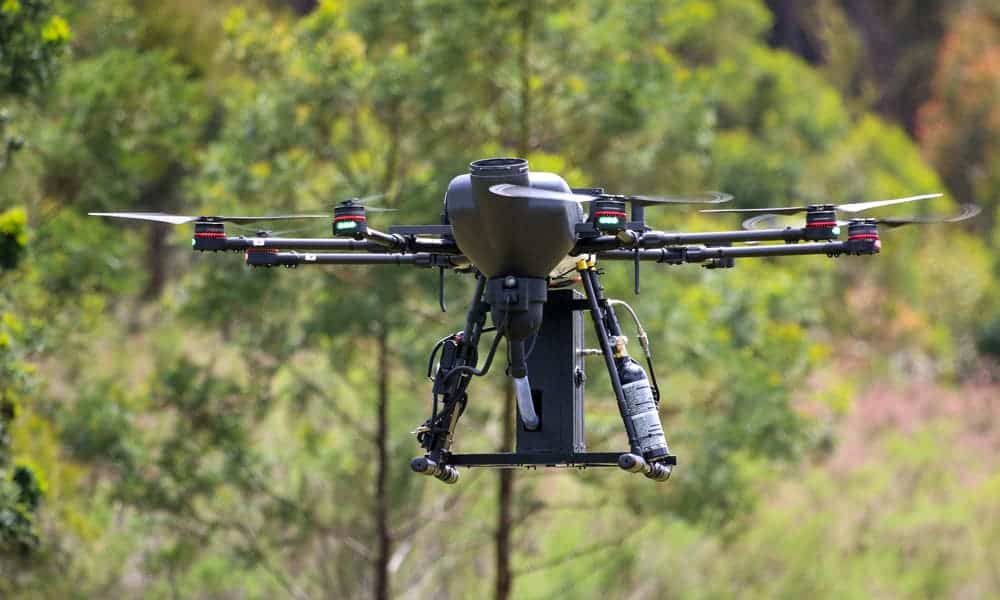Drones frequently get a bad press due to their involvement in military strikes, but drones can also play important environmental roles — for instance, in releasing seeds around the world to plant trees and tackle deforestation.

AirSeed Technologies, a start-up from Australia, is using artificial intelligence to find areas in need of some trees and firing seed pods from the sky with drones. The drones can plant over 40,000 seed pods per day, which the company argues is 25 times faster and 80% cheaper compared to the seed-planting methodologies currently being used.
Once the seeds are released by the drones, AirSeed remaps the planted areas to observe change over time, counting the three canopies and calculating biomass. This helps to monitor and report growth rates and, ultimately, the success of the project. Overall, the objective is to sow the seeds for 100 million trees by 2024.
According to the AirSeed’s website, the “patented seed pods are a low cost, low-impact solution to reforesting native species and provide several supplementary nutrients, minerals, and other additions, all of which are necessary for developing seedlings but may not be available in abundance in the soil at a planting location.”
The company has already planted more than 50,000 trees and hopes to accelerate its plans as a way of addressing deforestation. Last year, the tropics lost over 11 million hectares of tree cover, including 3.75 million hectares of primary forest. Of the forest lost, 40% disappeared in Brazil, followed by the Democratic Republic of Congo and Bolivia.
At the COP26 climate change summit in Glasgow last year, a group of more than 100 countries, representing 85% of the world’s forests, committed to stopping all deforestation in just nine years. However, the goal is similar to a previous commitment signed by a smaller group of countries seven years ago, the New York Declaration.
Growing uses for drones
While this is probably one of the coolest uses for drones so far, the technology has been quickly evolving over the last decades. Once upon a time, drones were similar to computers: expensive, large, and virtually impossible for the average consumer to buy. Today, drones are available in a wide array of models depending on their actual use.
Drones are helping to improve early warning systems on active volcanoes. A study last year focused on the Manam volcano in Papua New Guinea. Researchers tested two types of long-range drones equipped with gas sensors, cameras, and other devices. The drones took images and measured the gas composition right above the plumes.
But the list goes on. Drones are also being used to prevent the poaching of rhinos and elephants in Africa, where the poaching of large animals usually happens at night. The company Air Shepard is using three-aircraft operating teams that work with rangers on the ground. The drones fly over poaching areas with cameras that do infrared scanning.






